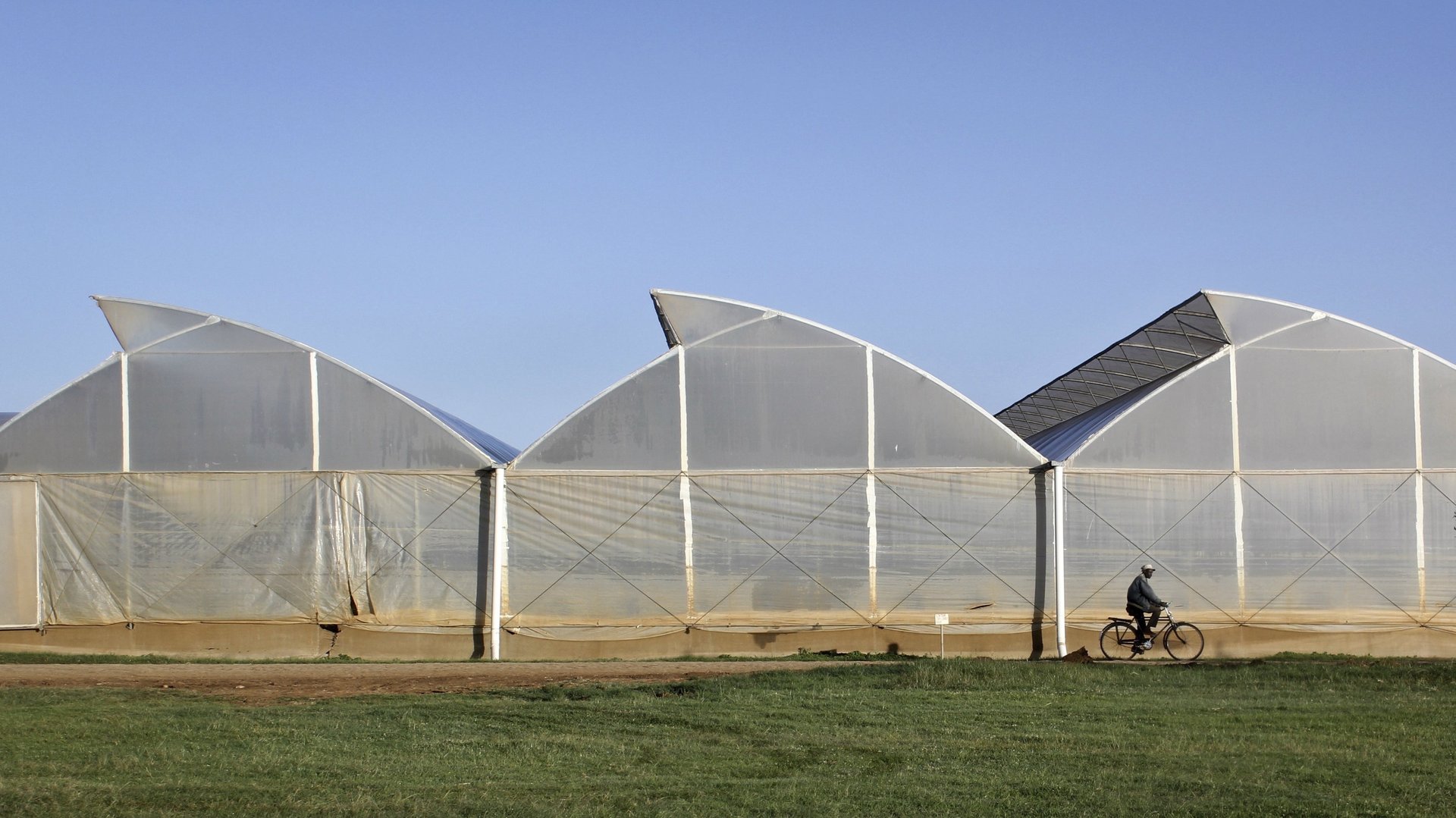Want a greenhouse that can fight climate change? Make it pink
By tweaking the glass roof panels of greenhouses, scientists have engineered a way to effectively grow indoor crops and gather power from the sun at the same time. In tests, the special pink glass generated enough solar electricity to control greenhouse temperatures, according to a new study.


By tweaking the glass roof panels of greenhouses, scientists have engineered a way to effectively grow indoor crops and gather power from the sun at the same time. In tests, the special pink glass generated enough solar electricity to control greenhouse temperatures, according to a new study.
“This technology has the potential to take greenhouses offline…which helps lower greenhouse gas emissions even more,” the scientists behind the project said in a statement.
The researchers, from the University of California-Santa Cruz, published their work this week in the American Geophysical Union’s journal Earth’s Future. The pink panels are called Wavelength Selective Photovoltaic Systems, and they are embedded with a magenta luminescent dye.
When growing, plants detect and take cues from the quantity, quality, direction, and duration of light using an array of photoreceptors that can discern the colors in light waves. As sunlight passes through the new pink panels, the dye removes a lot of the green and some of the blue light wavelengths. It also enhances red wavelengths, which drives more photosynthesis activity in plants. But rather than waste the captured blue and green wavelengths, the panels send them to embedded photovoltaic strips to transform them into energy.
In the article, the researchers explained the special pink panels did not hinder the plant growth—in fact, 20% of the plants actually grew better. They tested the panels on 20 different types of plants, including tomatoes, cucumbers, lemons, limes, peppers, strawberries, and basil.
“I thought the plants would grow more slowly, because it’s darker under these pink panels. The color of the light makes it like being on the Red Planet,” said Michael Loik, a researcher on the project, in a statement. “Plants are sensitive not just to the intensity of light but also to color. But it turns out the plants grow just as well.”
The technology is a potentially big deal for the greenhouse-grown food industry, which has grown sixfold in the last 20 years. Today, more than 9 million acres are used to grow food in greenhouses. It could also be big news for the nascent medical marijuana industry, which often uses greenhouses for production.
Greenhouses, while great for growing some produce year-round, can be energy intensive because it’s so expensive to keep them lit and at a controlled temperature. Cornell University has calculated that its network of greenhouses, which total about four acres, use about 18 million kWh for heating and lighting every year—creating more than 9 million pounds of carbon emissions.
Researchers say there’s still work to be done to measure how the pink-paneled greenhouses would measure up to others in overall sustainability, but they seem to offer at least one path forwards a food system that’s better for the planet.